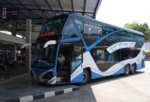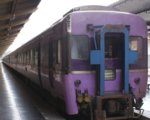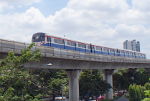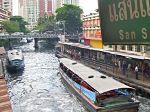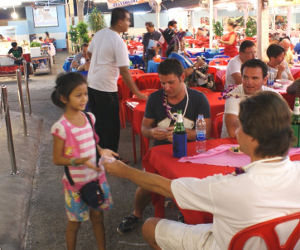Sightseeing in a Rickshaw
Go sightseeing in a rickshaw in Thailand; in Thai, it is called a samlor.
It can be exhausting to go sightseeing on foot in the heat in Thailand; however, if you choose to grab a taxi or a tuk-tuk, you may not enjoy the sights as much. Luckily, in some places, you have another option; you can go sightseeing in a pedal-powered rickshaw where the driver slowly pedal you around town to the various attractions. In Thailand, the rickshaw is called a samlor, which translates to three wheels in English.
You can find samlors in Chiang Mai, Hua Hin, and a few other cities in Thailand. Typically, the driver is an old, skinny man that has driven his samlor for decades. They may be and look old; nonetheless, they are very fit and still going strong. However, they are a dying breed as fresh blood in the form of younger drivers is infrequent.
A few years ago, you could find samlors at popular places and junctions in the cities, but now they are rare to find.
In Chiang Mai, you can still find them around Warorot Market by the river, and you can book them through Chiang Mai Samlor Tours; the link will lead you to a page with photos and info on some of the drivers. As I write this in July 2019, several of the drivers are in their 70s, and the oldest is 98 years old!
Please note that the prices at Chiang Mai Samlor Tours are much higher than if you find a samlor yourself. However, if you find a samlor yourself, you will have to negotiate a price and where you want to go, which can be difficult as most of them only speak Thai.
From Rickshaw to Tuk-Tuk
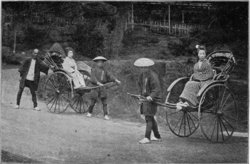
Inspired by horse carriages, the rickshaw was invented in Japan around 1869. It was a man drawn wooden carriage with two big wheels and two handles for the "driver". The Japanese name is 人力車 (jin-riki-sha), which means man-driven carriage. The photo is from the book The Gist of Japan - The Islands, Their People, And Missions and shows a couple of Japanese rickshaws in the late 1800s.
Although invented in the 1880s, the three-wheeled cycle rickshaw was not widely used until introduced in Singapore in 1929; here, they soon outnumbered the pulled rickshaws.
Later the rickshaws became motorized, now knows as tuk-tuks; finally, allowing the driver to relax while driving the passengers.






